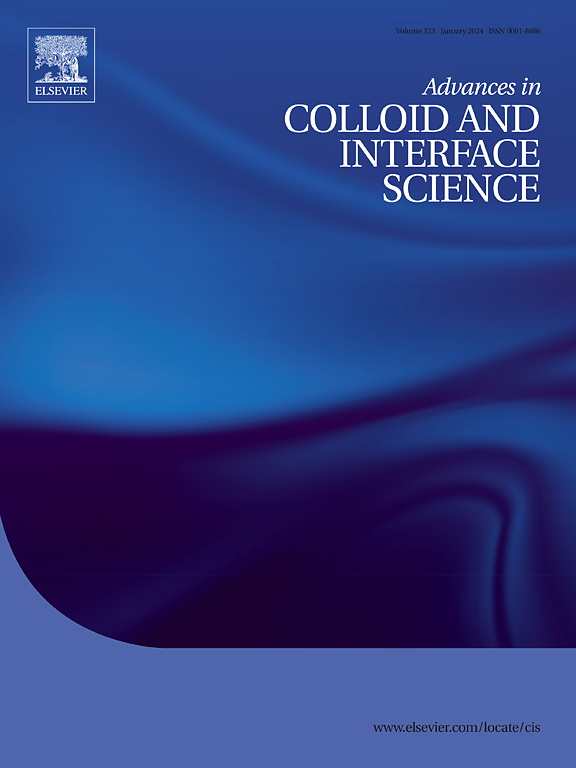新一代纳米技术集成生物表面活性剂:可持续和现代农业的生物农药开发创新
IF 19.3
1区 化学
Q1 CHEMISTRY, PHYSICAL
引用次数: 0
摘要
全球对生态友好型农业实践的需求日益增长,这就要求开发创新的有害生物管理解决方案,有效解决与传统化学农药相关的环境和生态问题,如有害生物抗药性、环境污染和非目标生物毒性。生物表面活性剂是一种从微生物和植物中提取的两亲性分子,具有生物可降解性、优异的表面活性和固有的抗菌功效等明显的优势,使其成为可持续害虫管理和控制的有希望的候选者。同时,纳米技术引入了创新的输送机制,提高了生物农药的稳定性、溶解度和针对性应用,显著减少了脱靶影响和环境足迹。本文综述了生物表面活性剂与纳米技术相结合生产先进生物农药的最新进展。主要的进展包括生物表面活性剂在提高活性成分的生物利用度和有效性方面的作用,以及利用纳米农药以提高精度进行有针对性的害虫控制。结合生物表面活性剂独特的两亲性和纳米载体的精确靶向能力,在害虫管理功效方面有了实质性的改进,并与害虫综合管理(IPM)原则密切相关。尽管取得了这些有希望的进展,但仍存在重大的知识空白,包括了解生物表面活性剂、纳米材料和环境基质之间的相互作用,以及评估与纳米农药使用相关的长期生态影响和安全概况。本文概述了需要进一步探索的关键研究领域,以优化大规模农业部署的生物表面活性剂纳米技术系统。应对这些挑战将促进更广泛的采用,确保可持续的虫害防治措施,从而对全球粮食安全和环境保护作出重大贡献。将生物表面活性剂与纳米技术相结合代表了农业害虫管理的一种变革性方法,通过有效的、环境友好的解决方案,为可持续农业的革命提供了巨大的潜力。本文章由计算机程序翻译,如有差异,请以英文原文为准。

Next-generation nanotechnology-integrated biosurfactants: Innovations in biopesticide development for sustainable and modern agriculture
The increasing global demand for eco-friendly agricultural practices necessitates the development of innovative pest management solutions, effectively addressing the environmental and ecological issues associated with traditional chemical pesticides, such as pest resistance, environmental contamination, and non-target organism toxicity. Biosurfactants, biologically derived amphiphilic molecules from microbial and plant sources, offer distinct advantages including biodegradability, excellent surface-active properties, and inherent antimicrobial efficacy, making them as promising candidates for sustainable pest management and control. Concurrently, nanotechnology introduces innovative delivery mechanisms, enhancing biopesticide stability, solubility, and targeted application, significantly minimizing off-target impact and environmental footprint. This review emphasizes recent breakthroughs in integrating biosurfactants with nanotechnological strategies to produce advanced biopesticides. Key advancements include the role of biosurfactants to increase the bioavailability and effectiveness of active ingredients and utilizing nanopesticides for targeted pest control with improved precision. Combining the unique amphiphilic properties of biosurfactants and the precise targeting capabilities of nanocarriers presents substantial improvements in pest management efficacy and aligns closely with Integrated Pest Management (IPM) principles. Despite these promising developments, significant knowledge gaps remain, including understanding the interactions between biosurfactants, nanomaterials, and the environmental matrices, as well as assessing long-term ecological impacts and safety profiles associated with nanopesticide usage. This article outlines critical research areas requiring further exploration to optimize biosurfactant-nanotechnology systems for large-scale agricultural deployment. Addressing these challenges will facilitate broader adoption, ensuring sustainable pest control practices that significantly contribute to global food security and environmental preservation. Integrating biosurfactants with nanotechnology represents a transformative approach in agricultural pest management, offering substantial potential to revolutionize sustainable agriculture through effective, environment-friendly solutions.
求助全文
通过发布文献求助,成功后即可免费获取论文全文。
去求助
来源期刊
CiteScore
28.50
自引率
2.60%
发文量
175
审稿时长
31 days
期刊介绍:
"Advances in Colloid and Interface Science" is an international journal that focuses on experimental and theoretical developments in interfacial and colloidal phenomena. The journal covers a wide range of disciplines including biology, chemistry, physics, and technology.
The journal accepts review articles on any topic within the scope of colloid and interface science. These articles should provide an in-depth analysis of the subject matter, offering a critical review of the current state of the field. The author's informed opinion on the topic should also be included. The manuscript should compare and contrast ideas found in the reviewed literature and address the limitations of these ideas.
Typically, the articles published in this journal are written by recognized experts in the field.

 求助内容:
求助内容: 应助结果提醒方式:
应助结果提醒方式:


